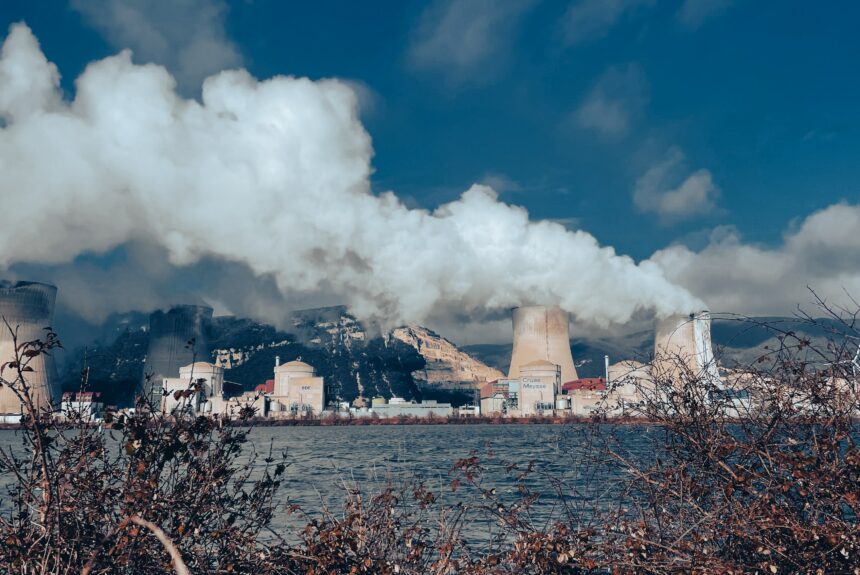The Challenge: Nuclear power is the largest emissions-free source of electricity in the United States, and second-largest in the world (behind hydropower). Nuclear energy will be critical to meeting domestic and international climate targets, but antiquated policies and costly, ineffective regulations are slowing its progress and keeping innovative, advanced reactors on the shelf rather than in the market.
The Opportunity: Nuclear power has significant potential to meet the world’s energy needs and climate goals. Innovative companies are paving the way for the next generation of nuclear power plants that may pose even fewer public safety or proliferation risks than the already safe fleet currently on the market. In fact, nuclear power is among the safest, if not the safest, source of energy that exists today. Congress and the administration should establish a flexible, technology-neutral framework to enable different nuclear energy technologies to compete in the marketplace. Whether it is research and development, licensing and permitting, or spent fuel management, policymakers should remove impediments to nuclear energy innovation, investment, and spent fuel management.
The Solutions: Congress and the administration should:
- Streamline permitting for new reactor construction, whether for large light-water reactors, small modular reactors, or microreactors.
- Force the Nuclear Regulatory Commission to implement an efficient, modernized, technology-neutral licensing pathway for advanced nuclear reactors (Part 53).
- Modernize radiation standards and appropriate funds for the Low Dose Radiation Research Program.
- Adopt a strategy for localized, consent-based siting for nuclear waste.
- Continue to support and appropriate funds for research and development programs at the Department of Energy and Department of Defense like the Advanced Reactor Demonstration Program and Pele Program.
- Amend the Nuclear Waste Policy Act to state that new reactors do not need to contract with the Department of Energy for an NRC license for waste management.
- Shift application and safety costs to the federal government.
- Expand international cooperation on commercial nuclear power and opportunities for global exports of nuclear energy technologies.
Key Facts
- With 435 reactors (and 58 more reactors under construction across 50 countries)4, nuclear provides about 10 percent of the world’s power.
- In the United States, 94 reactors in 28 states generate approximately 20 percent of the country’s electricity and about half of the country’s emissions-free electricity.
- Nuclear is among the safest forms of energy on the planet and is responsible for fewer deaths per terrawatt hour than wind, hydropower, and natural gas.
- By producing carbon-free energy, the American nuclear industry prevented more than 476 metric tons of CO2 from entering the atmosphere in 2019. That’s equivalent to removing 100 million cars from the roads.
- Nuclear energy is a desirable source of clean, reliable electricity, with a capacity factor (the amount of time a power plant produces energy) of 93%.
Legislation to follow:
| Legislation | Bill Number(s) | House Sponsor | Senate Sponsor | House Cosponsor(s) | Senate Cosponsor(s) |
| Reduce Russian Uranium Imports Act | S.763 | Barasso (R-WY) | Manchin (D-WV), Risch (R-ID), Heinrich (R-NM), Lummis (R-WY), Coons (D-DE), and Marshall (R-KS) | ||
| Nuclear Fuel Security Act | S.452 and H.R.1086 | Latta (R-OH-5) | Manchin (D-WV) | Barrasso (R-WY), Risch (R-ID) | |
| Nuclear Assistance for America’s Small Businesses Act | H.R.1007 | Donalds (R-FL-19) | Fleischmann (R-TN-3), Salazar (R-FL-27), Nehls (R-TX-22), Bishop (R-NC-8), Mace (R-SC-1), and more | ||
| ADVANCE Act | S. 1111 | Capito (R-WV) | Whitehouse (D-RI), Barrasso (R-WY), Carper (D-DE), Crapo (R-ID), Booker (D-NJ), and more |
Read the full chapter here.


